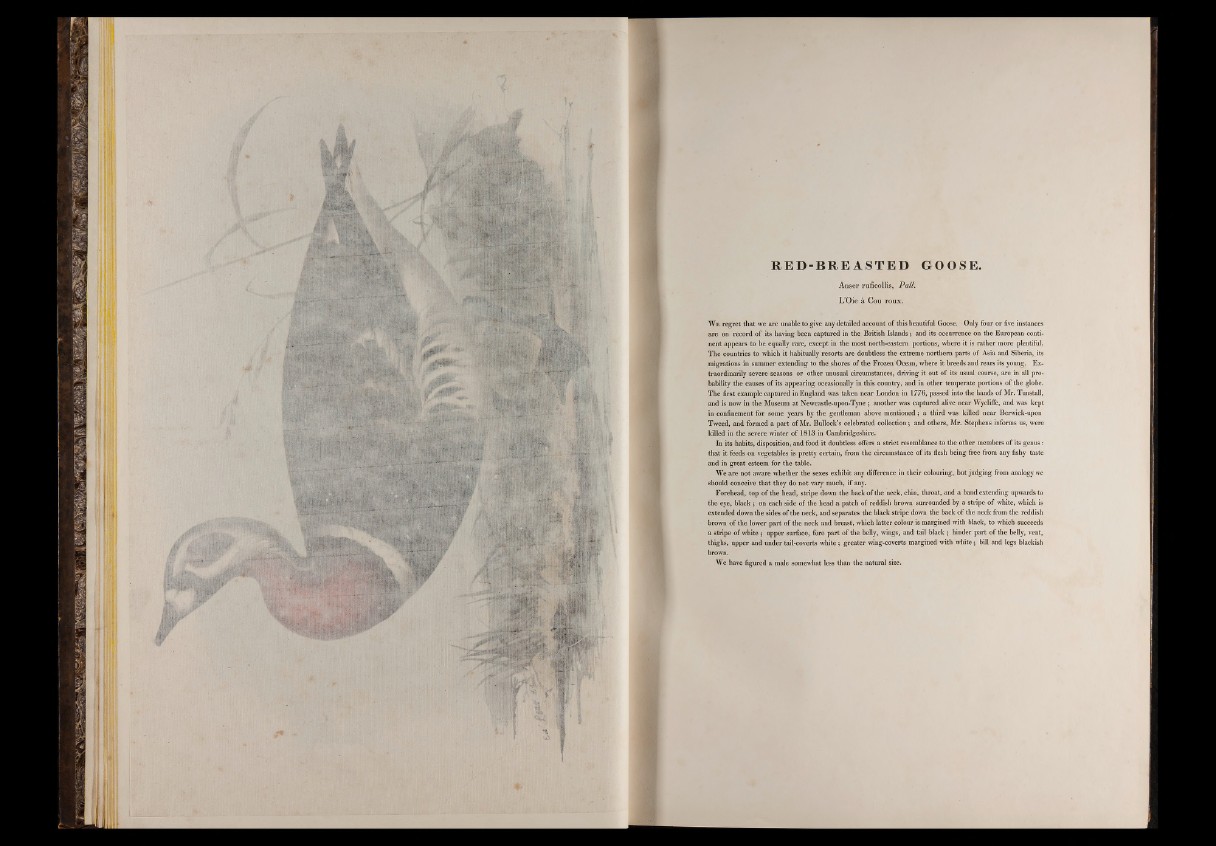
K
a
M . J P '
R E D - B R E A S T E D GOOSE.
Anser ruficollis, Pall.
L’Oie à Cou roux.
We regret that we are unable to give any detailed account of this beautiful Goose. Only four or five instances
are on record of its having been captured in the British Islands ; and its occurrence on the European continent
appears to be equally rare, except in the most north-eastern portions, where it is rather more plentiful.
The countries to which it habitually resorts are doubtless the extreme northern parts of Asia and Siberia,, its
migrations in summer extending to the shores of the Frozen Ocean, where it breeds and rears its young. Extraordinarily
severe seasons or other unusual circumstances, driving it out of its usual course, are in all probability
the causes of its appearing occasionally in this country, and in other temperate portions of the globe.
The first example captured in England was taken near London in 1776, passed into the hands of Mr. Tunstall,
and is now in the Museum at Newcastle-upon-Tyne ; another was captured alive near Wycliffe, and was kept
in confinement for some years by the gentleman above mentioned ; a third was killed near Berwick-upon
Tweed, and formed a part of Mr. Bullock’s celebrated collection ; and others, Mr. Stephens informs us, were
killed in the severe winter of 1813 in Cambridgeshire.
In its habits, disposition, and food it doubtless offers a strict resemblance to the other members of its genus :
that it feeds on vegetables is pretty certain, from thé circumstance of its flesh being free from any fishy taste
and in great esteem for the table.
We are not aware whether the sexes exhibit any difference in their colouring, but judging from analogy we
should conceive that they do not vary much, if any.
Forehead, top of the head, stripe down the back of the neck, chin, throat, and a band extending upwards to
the eye, black ; on each side of the head a patch of reddish brown surrounded by a stripe of white, which is
extended down the sides of the neck, and separates the black stripe down the back o f the neck from the reddish
brown of the lower part of the neck and breast, which latter colour is margined with black, to which succeeds
a stripe of white ; upper surface, fore part of the belly, wings, and tail black ; hinder part of the belly, vent,
thighs, upper and under tail-coverts white ; greater wing-coverts margined with white ; bill and legs blackish
brown.
We have figured a male somewhat less than the natural size.